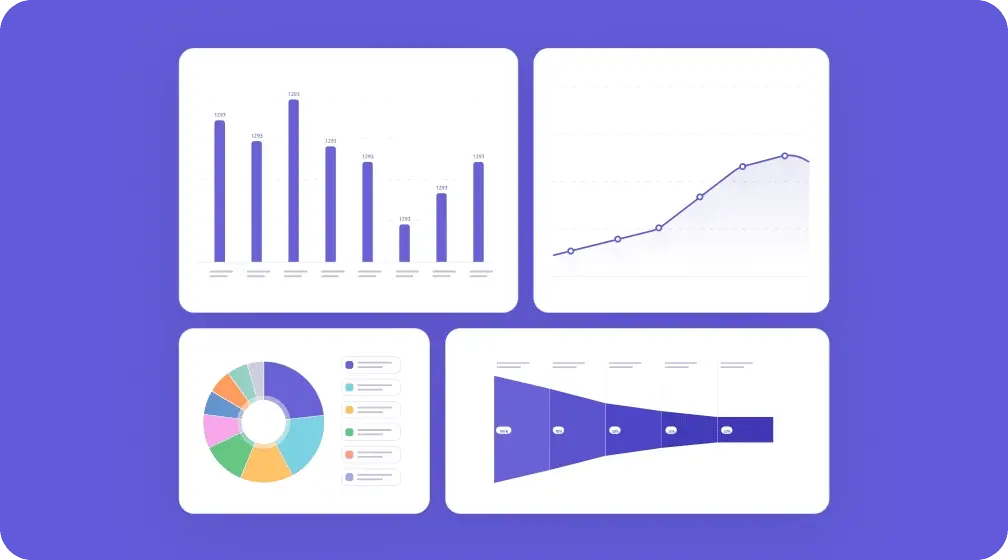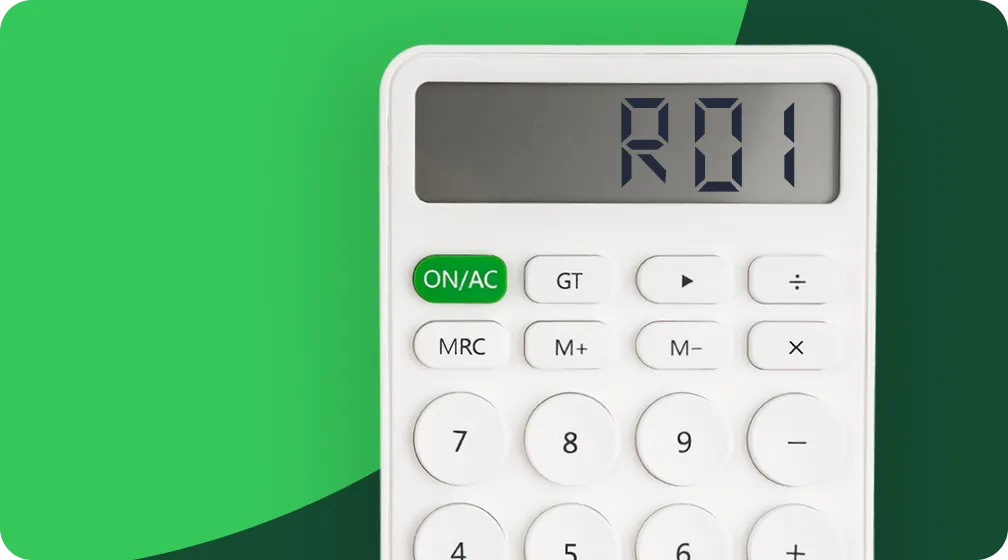The Ultimate Guide to Discovery Calls That Close Prospects

Table of Contents:
A great product doesn’t sell itself. How you engage and qualify leads is equally important.
A discovery call is your chance to really dig into what the prospect needs and what’s holding them back. Once you know that, it’s way easier to offer something that actually fits.
An effective discovery call sets the tone for the sales process. It helps you make sure you’re talking to the right folks — the ones who can actually move things forward.
Let’s break down how to lead a solid discovery call — no fluff, just the stuff you actually need:
- preparation requirements,
- call structure,
- how to end a discovery call, and more!
But first, let’s break down the concept of a discovery call.
Understanding the Discovery Call
A discovery call is the most important step in a sales process. It forms the foundation for cracking a successful deal.
It’s not just small talk — the call is structured to help you figure out what really matters to the prospect: their struggles, goals, and how they make decisions.
When done right, a discovery call can help:
- Qualify the lead: Does the prospect have a real problem that your solution can address? Can they afford your product? A discovery call helps you get real answers — the kind that tell you what the prospect actually needs and whether you can deliver.
- Make it real — build trust early on: If people feel like you’re actually trying to help them (and not just sell something), they’ll open up and tell you what’s really going on.
- Identify deal-breakers and priorities: Some prospects might seem like a great fit on the surface, but once you get to know them more, you might realize that they have requirements that your product or service can’t meet.
- See if it’s worth moving forward: A discovery call tells you if a prospect is ready to move down the sales funnel so that you can tailor your next steps accordingly.
Now, before we move ahead, it’s important to understand the difference between a discovery call and a sales call since many sales teams blur the lines between the two. The table below highlights five basic ways a discovery call differs from a sales call.
| Aspect | Discovery Call | Sales Call |
| Purpose | Learn about the prospect and qualify the lead | Showcase the product and close the deal |
| Focus | Prospect’s pain points, goals, and requirements | Product features, value, and ROI |
| Timing | At the beginning of the sales process | After qualification of the lead |
| Approach | Conversational, information-gathering | Solution-driven, addressing objectives |
| Outcome | Determines next steps: move forward or disqualify | Encourages commitment and moves toward closing |
How to Prepare for a Successful Discovery Call
A great discovery call starts long before you pick up the phone or hop on a Zoom meeting. Preparation is key here.
That said, let’s take a look at four tips that will help you make the most out of your discovery call:
1. Researching Your Prospect
A well-prepared call increases engagement and builds credibility. That means you must research your prospect beforehand so that you have a basic idea of the prospect’s challenges and requirements.
Below we’ve mentioned four key areas to research before going on a discovery call:
- Company background: This includes the prospect’s industry, company size, revenue, and position in the market.
- Pain points and existing solutions: Find out if they are already using some solution offered by your competitor. Have they expressed frustration about a specific issue?
- Figure out who calls the shots: If you don’t know who actually makes the final call, you might waste time convincing the wrong person — and miss your shot to pitch it right.
- Recent news or events: What has the prospect been up to recently? Have they raised funding? Are they undergoing a major management transition? These questions help you figure out what really matters to the prospect — so you can pitch something that actually fits.
2. Setting Clear Objectives
Having a goal-oriented approach to the call makes it all the more meaningful. You must have a clear (but flexible) agenda as to how you want the conversation to move forward.
So, ask yourself:
- What key information do I need to gather? (e.g., prospect’s decision-making process, budget considerations, pain points)
- What potential roadblocks could arise? (e.g., competitor loyalty, internal constraints, highly specific requirements)
- What’s the ideal next step after this call? (e.g., booking a demo, getting buy-in from another stakeholder, sending a proposal)
3. Preparing the right questions
Asking generic or surface-level questions prevents the prospect from sharing deeper insights. Therefore, it’s important to focus on open-ended, insightful questions that encourage meaningful discussion.
Here are four essential categories of questions to include in your preparation:
- Pain-point questions: “What challenges do you particularly face in [specific area]?” “What’s preventing you from achieving [desired outcome]?”
- Process-related questions: “How are you currently handling [problem]?” “What’s working well, and what’s not?”
- Budget and authority questions: “Who else is involved in the decision-making process?” “Do you have a set budget in mind for this solution?”
- Try these questions: “In a perfect world, what would the solution look like for you?” “When it comes down to choosing, what really matters most to you?”
4. Technical Preparation
Even the best-planned discovery call can be derailed by technical glitches. To ensure a smooth and distraction-free, you must:
- Test audio/video tools because poor sound quality or connection issues can quickly kill the momentum of the conversation.
- Have a structured note-taking system so that you can capture key details on the fly. This could be in the form of a CRM tool, a notepad, or a digital document.
- Keep a few things handy — like case studies or real examples — in case you need to back up what you’re saying.
Consider using tools like an AI voice generator to simulate prospect conversations during training. These tools can help sales reps practice their tone, pitch, and delivery, ensuring they’re better prepared for real-life calls.
Structuring the Discovery Call
“It’s necessary to have a clear structure (for e.g., how do you plan to start or what will be the flow of the call) so that your discovery call isn’t directionless. Otherwise, not only will you have a disengaged prospect but you might also miss a golden opportunity to convert.”
To maximize engagement and control the conversation, keep the following four tips in mind:
1. Building a Strong Opening
It will take just a few minutes for the prospect to decide whether this conversation is worth their time.
Needless to say, you must open strong. Below are three tips to do just that:
- Start with a friendly yet professional introduction. Keep it short, warm, and to the point. For example, “Hey [prospect’s name], it’s great to connect! How’s your day going?”
- Communicate your agenda clearly to set expectations for the call. For example, “Today, I’d like to learn more about your challenges and goals, and if there’s a fit, discuss potential solutions.”
- Add a brief value statement about why this call matters. This helps you position the call as a meaningful and valuable discussion for the prospect and not a sales pitch.
2. Asking the Right Questions (Guided Exploration)
The sooner your prospect talks, the better. And for that to happen, you must avoid pitching the moment you connect to give the prospect the time to engage.
The conversation can flow like this:
- Uncover pain points first. (e.g., “What’s your biggest challenge when it comes to [problem]?”)
- Ask about current solutions and frustrations. (e.g., How have you been handling [problem] recently?”)
- Discuss desired outcomes and goals. (e.g., What does an ideal solution to [problem] look like to you?”)
- Identify potential objections early. (e.g., Have you looked into similar solutions before? What’s stopped you from moving forward?”)
3. Handling Common Prospect Responses
Not every prospect will give clear, detailed, and direct answers right away. You must learn to navigate and keep the conversation productive:
- Ask for clarification when the prospect gives vague responses. (e.g., “Can you elaborate on that?”)
- Encourage the prospect to introspect when they show indifference to a challenge. (e.g., “Have you considered the impact of [problem] on [business metric]?”)
- Adopt a consultative approach if the prospect has budget concerns. (e.g., “What does an ideal investment look like for you?”)
4. Assessing Fit and Setting Next Steps
A discovery call doesn’t guarantee lead qualification. If the prospect is a good fit, move forward with:
- Scheduling a sales demo or follow-up meeting.
- Sending over additional resources (case studies, ROI reports, etc.)
- Looping in key decision-makers if needed.
However, if they’re NOT a fit, you can end the call professionally by providing value-driven recommendations—for example, alternative solutions (even if they’re not yours).
Delivering a High-Impact Discovery Call
An ideal discovery call should not only collect information from the prospect, but it should feel insightful, engaging, and helpful to the prospect.
This requires honing your communication skills, the ability to bring hidden pain points to the surface, and handling objections well.
1. Effective Communication Techniques
Your tone matters. If your energy’s off, your message won’t land — no matter how good your words are.
To communicate effectively:
- Start by keeping it casual — like a real conversation, not a script..
- Keep it simple, easy to get, and match the way your prospect communicates.
- Control the pace of the conversation. Don’t rush through questions or speak too quickly.
- Pause for a moment after asking a key question or making an important point. Give the prospect time to think and respond.
2. Uncovering and Aligning on Pain Points
Instead of assuming needs, guide the prospect to identify their own points. This way, they’ll become more invested in finding a solution.
You can use techniques like:
- The Five Whys: Dig deeper into the root cause of a problem by asking “why” multiple times.
- The Impact Framework: Tie the challenge to the prospect’s tangible business outcomes. For instance, explore how the problem affects team productivity or business revenue.
Don’t forget to restate their concerns. Summarize what the prospect has shared to reassure them you’re actively listening.
3. Handling Objections
Discovery calls often surface hesitations and doubts, and that’s a good thing because it shows that the prospect is thinking critically.
In fact, with 57% of their decision-making already done before they even engage with sales, there’s a high probability that your prospect has researched beforehand and has a list of questions to ask.
Addressing these objections early on proves you’re willing to provide a real solution, and not just sell your product/service.
Strategies for handling objections:
- Dismissing concerns can make prospects feel unheard. Instead, show you understand. For example, “That’s a completely valid concern.”
- Use customer success stories to demonstrate solutions. This is crucial since social proof reassures prospects that their concerns can be overcome.
- Ask probing questions to understand the root of their objection. For example, “What’s your biggest concern about making this investment?”
Closing the Discovery Call
If your discovery call ends weakly, it’ll probably fall flat. You’ve got to wrap it up with clear next steps and leave the prospect feeling confident and excited.
1. Summarizing Key Benefits
Before ending the call, reinforce the core value of your product by summarizing how it solves the prospect’s specific challenges.
A few tips to keep in mind while doing so:
- Instead of listing everything, highlight the most relevant features.
- Use their own words where possible. For example, “Earlier, you mentioned how time-consuming your manual data entry process is. As you saw, our automation tool eliminates that, saving your team at least 10 hours a week.”
- Quantify the benefits (ROI) wherever possible to make the impact more tangible.
2. Contracting Next Steps
Leaving the conversation open-ended makes it easy for the prospect to delay a decision.
You must guide the prospect toward a concrete next step, which could be in the form of setting a time for a demo/follow-up or offering additional resources (case studies, sales benchmark reports).
Finally, always remember to gain clear commitment from the prospect. For instance, you can ask: “Would it make sense to schedule a deeper dive into the solution next week?”
3. Gauging Interest and Readiness
Chances might be that a prospect doesn’t want to move forward immediately. That’s why it’s best to ask direct questions like below to end with confidence and meaningful progress:
- “Based on what we discussed, does this align with your current priorities?”
- “What additional information would help you move forward?”
Post-Call Follow-Up
Don’t skip the follow-ups. They’re what keep the conversation going, show you’re serious, and help you stay top of mind.
Let’s understand how to conduct a successful discovery call follow-up:
1. Providing Additional Resources
Your discovery call may have answered many questions, but prospects often need more information before making a decision. Sending relevant materials post-call strengthens your case.
Consider sending a recap email with:
- The key pain points discussed along with how your solution addresses them
- Relevant case studies, whitepapers, or guides tailored to your prospect’s concerns
- A clear, proposed next step (e.g., a follow-up meeting, demo, etc.).
2. Soliciting Feedback
Gathering feedback is a smart way to improve future calls and also keep your prospects engaged. Ask open-ended questions like:
- “Did today’s conversation help clarify potential solutions for you?”
- “Is there anything else you were hoping to discuss?”
The responses to such questions will help you refine your approach for discovery calls in the future.
3. Maintaining Engagement
Even if the prospect isn’t ready to buy immediately, staying in touch keeps your product top of mind. To stay on top of your prospect’s mind without being pushy:
- Schedule regular check-ins to keep the relationship warm.
- Share relevant updates regarding your offerings.
- Offer value beyond selling. For example, you can share the latest industry insights, company reports, or exclusive invitations to webinars.
Additionally, consider using a QR code generator to create quick-access links to demo videos, product pages, or exclusive resources. Including scannable QR codes in your follow-up emails or sales decks can enhance user convenience and encourage continued engagement—especially when dealing with mobile-savvy prospects.
Conclusion
A well-executed discovery call is no less than an “aha” moment for your prospect. When done right, it can make them realize that change isn’t just possible, but also necessary.
A CRM that helps you structure your sales process can make all the difference. With such a tool, you can easily track your conversations, map key pain points, and always stay ahead of opportunities.
Want to lead with smarter, more effective discovery calls? Book a demo with us and see how Livespace CRM can refine your approach.
Other posts

Why CRM integration matters (and how to do it right)

Turning ‘No’ into ‘Yes’: How to Convince Your Customers to Buy from You?






